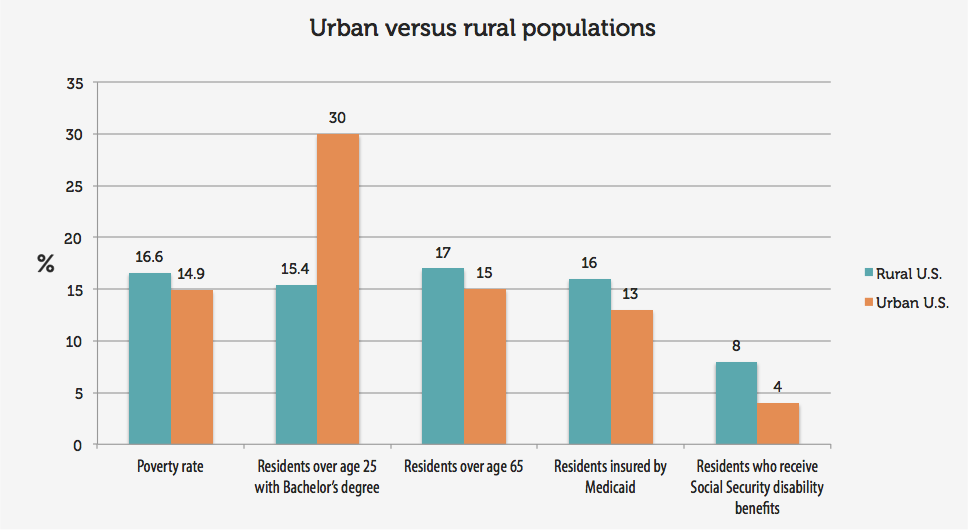Rural Populations: An Overview
One hundred years ago, 72% of the U.S. population lived in rural areas. Today, only 20% do. As populations have become more centered in metropolitan areas and as metropolitan areas have extended and incorporated some formerly rural areas in the form of "bedroom communities," commercial parks, and other residential and commercial developments, rural populations have become more homogenous. For example, ethnic minorities comprise only 22% of rural populations today, as compared with 56% of urban populations. Rural counties have a disproportionately low proportion of residents who are in their most productive years (18-64 years), due to out-migration.

What are some other characteristics of the rural U.S. population?
Population-level statistics mask great variation among rural populations. For example, rural counties tend to have low ethnic or racial diversity. While there are a number of "minority-majority" rural areas, rural counties tend to be mono-ethnic, for example predominantly African-American areas in the U.S. south, majority Hispanic locales in the U.S. southwest, almost exclusively white counties in Appalachia, and Native American communities throughout the country. Further, rural poverty varies widely by race/ethnicity, region, and other factors. Three-fourths of rural counties with a poverty rate over 20% are "minority-majority." Poverty in rural counties is often characterized as "persistent."
In-migration is a greater driver of rural population growth than is birth rate, with the exception of rural counties that are predominantly Hispanic. Some rural areas are actually experiencing small population booms that help to mitigate the losses of younger working-age adults. People who move to rural areas tend to attribute their choice to lifestyle factors including lower cost-of-living, retirement options, telecommuting and local work opportunities for people with advanced degrees, recreation and other amenities, and "bedroom community" proximity to nearby urban areas.

